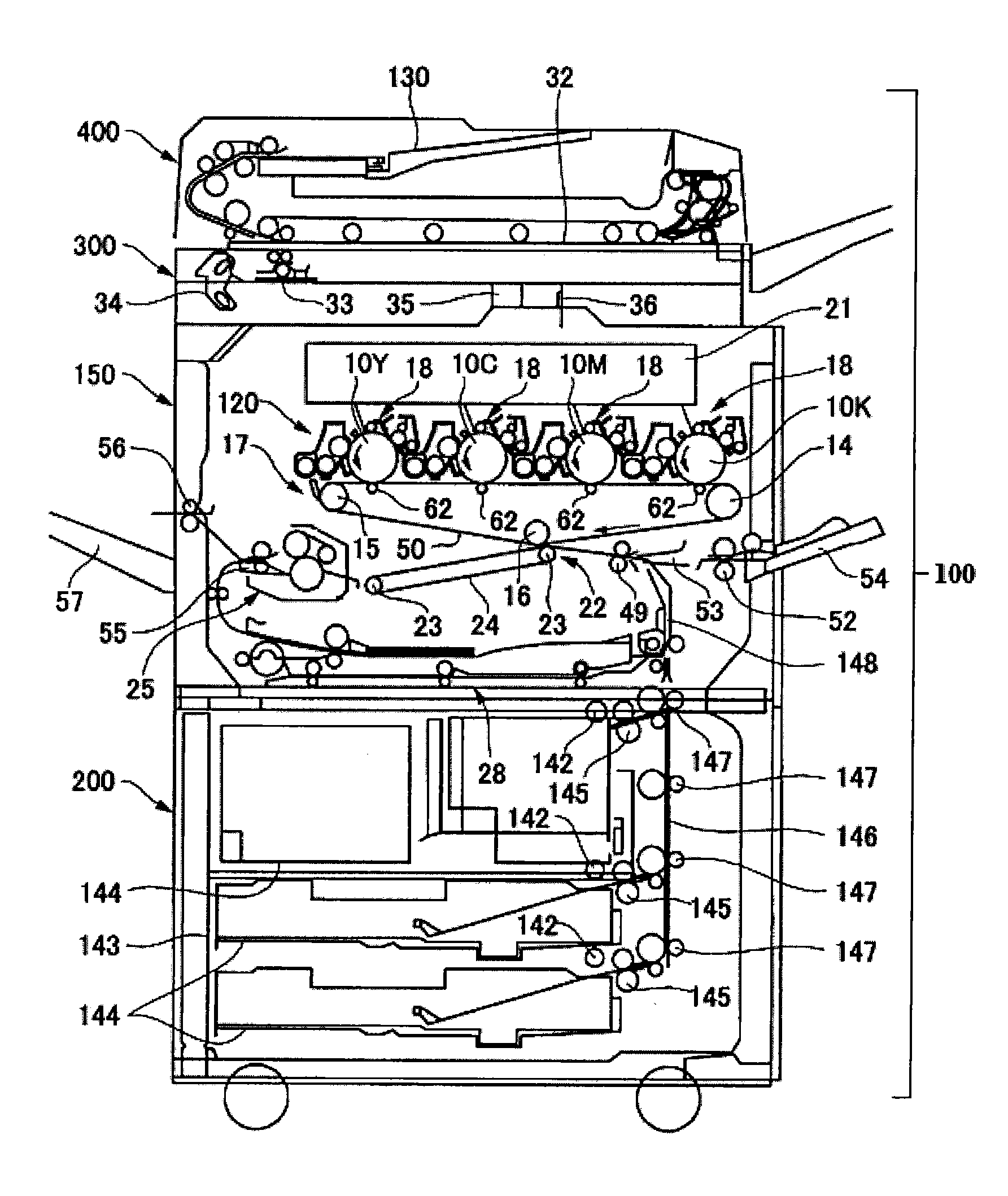Image forming method and image forming apparatus
a technology of image forming apparatus and forming method, which is applied in the direction of electrographic process apparatus, instruments, electrographic process, etc., can solve the problems of reducing the resolution dot density, unsuitable photoconductors, and inability to obtain high-quality image output stably for a prolonged period
- Summary
- Abstract
- Description
- Claims
- Application Information
AI Technical Summary
Benefits of technology
Problems solved by technology
Method used
Image
Examples
production example 1
[0296]Preparation of Photoconductor 1—
[0297]In a ball mill device, 27 parts by mass of an X-metal free phthalocyanine (FASTOGEN BLUE 8120BS manufactured by Dainippon Ink and Chemicals Inc.) as a charge generating material was dispersed together with 1,015 parts by mass of cyclohexanone for 120 minutes to prepare a charge generating material dispersion (1).
[0298]Separately to the above, titanyl phthalocyanine was prepared according to the method described in JP-A No. 2001-19871. Specifically, 29.2 g of 1,3-diiminoiso-indolin and 200 mL of sulfolane were mixed, and then 20.4 g of titanium tetrabutoxide was added dropwise to the mixture in a nitrogen atmosphere. After completion of the drop, the mixture was gradually heated up to 180° C. and stirred for 5 hours to react it while maintaining the reaction temperature at 170° C. to 180° C. After completion of the reaction, the resultant was naturally cooled to obtain a deposit, and then the deposit was filtered and washed with chloroform ...
production example 2
[0312]Preparation of Photoconductor 2—
[0313]A photoconductor 2 was prepared in the same manner as in Production Example 1 with the exception that the charge generating material dispersion (1) and the charge generating material dispersion (2) were added respectively at 0.38 parts by is mass and 62.21 parts by mass and stirred to prepare a photosensitive layer coating solution.
production example 3
[0314]Preparation of Photoconductor 3—
[0315]A photoconductor 3 was prepared in the same manner as in Production Example 1 with the exception that the charge generating material dispersion (1) and the charge generating material dispersion (2) were added respectively at 0.75 parts by mass and 61.9 parts by mass and stirred to prepare a photosensitive layer coating solution.
PUM
| Property | Measurement | Unit |
|---|---|---|
| Bragg angle 2θ | aaaaa | aaaaa |
| Bragg angle 2θ | aaaaa | aaaaa |
| Bragg angle 2θ | aaaaa | aaaaa |
Abstract
Description
Claims
Application Information
 Login to View More
Login to View More - R&D
- Intellectual Property
- Life Sciences
- Materials
- Tech Scout
- Unparalleled Data Quality
- Higher Quality Content
- 60% Fewer Hallucinations
Browse by: Latest US Patents, China's latest patents, Technical Efficacy Thesaurus, Application Domain, Technology Topic, Popular Technical Reports.
© 2025 PatSnap. All rights reserved.Legal|Privacy policy|Modern Slavery Act Transparency Statement|Sitemap|About US| Contact US: help@patsnap.com



